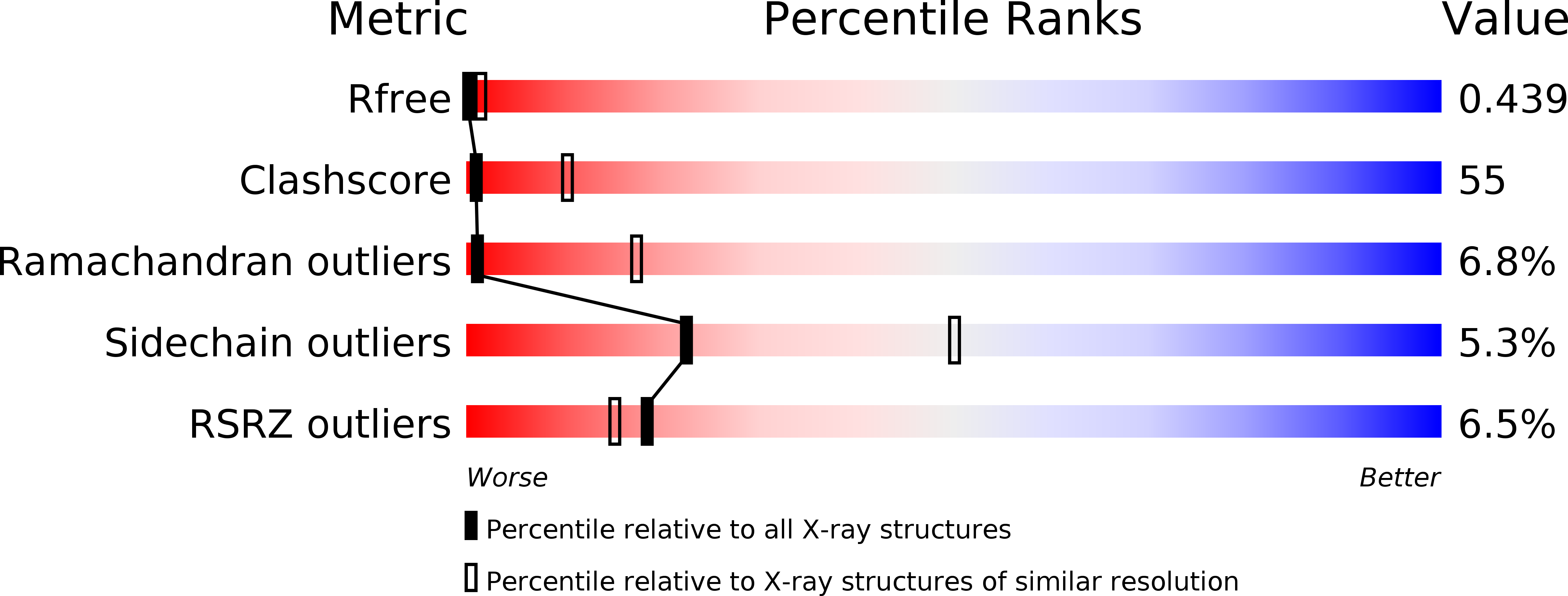
Deposition Date
2016-09-09
Release Date
2017-02-15
Last Version Date
2024-10-23
Entry Detail
PDB ID:
5LUQ
Keywords:
Title:
Crystal Structure of Human DNA-dependent Protein Kinase Catalytic Subunit (DNA-PKcs)
Biological Source:
Source Organism:
Homo sapiens (Taxon ID: 9606)
Host Organism:
Method Details:
Experimental Method:
Resolution:
4.30 Å
R-Value Free:
0.43
R-Value Work:
0.38
R-Value Observed:
0.38
Space Group:
P 1 21 1


